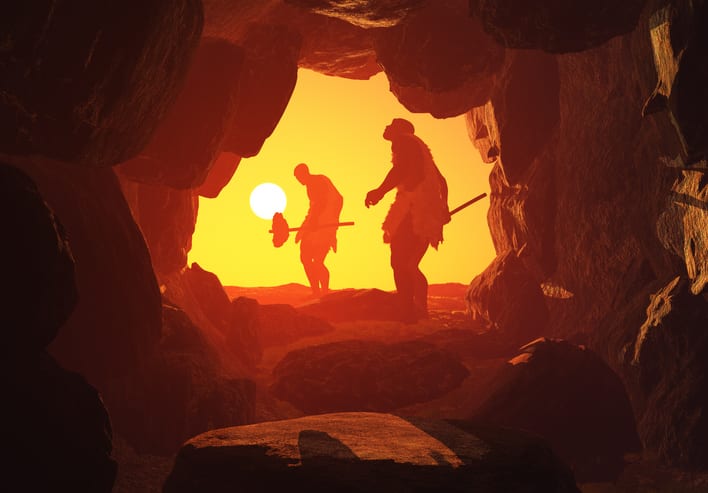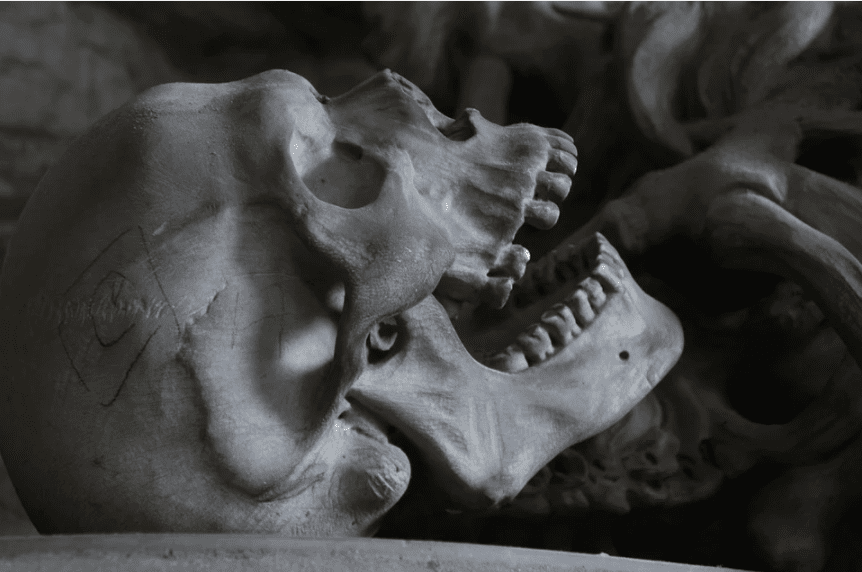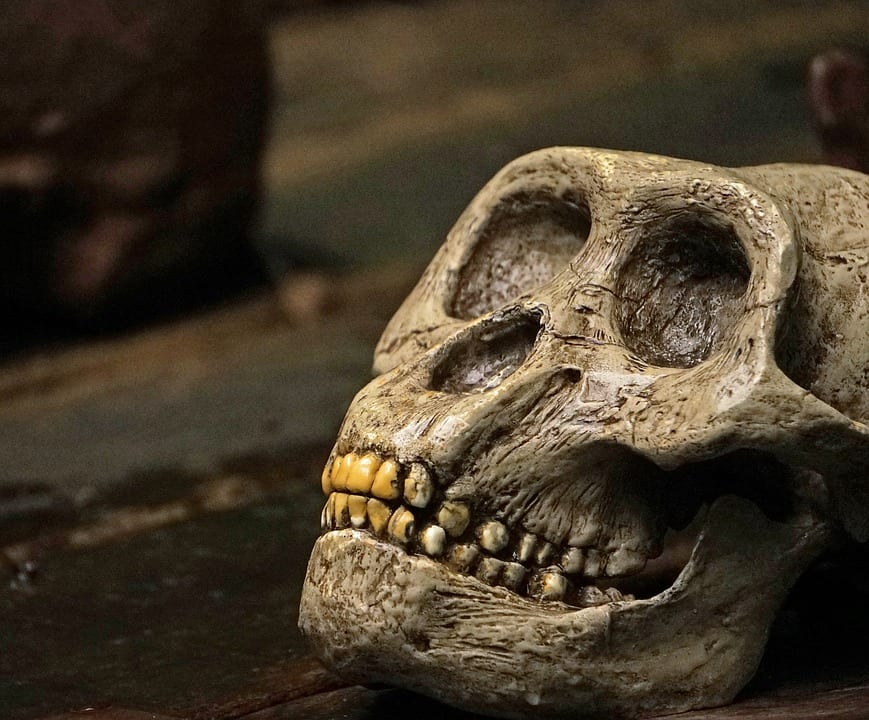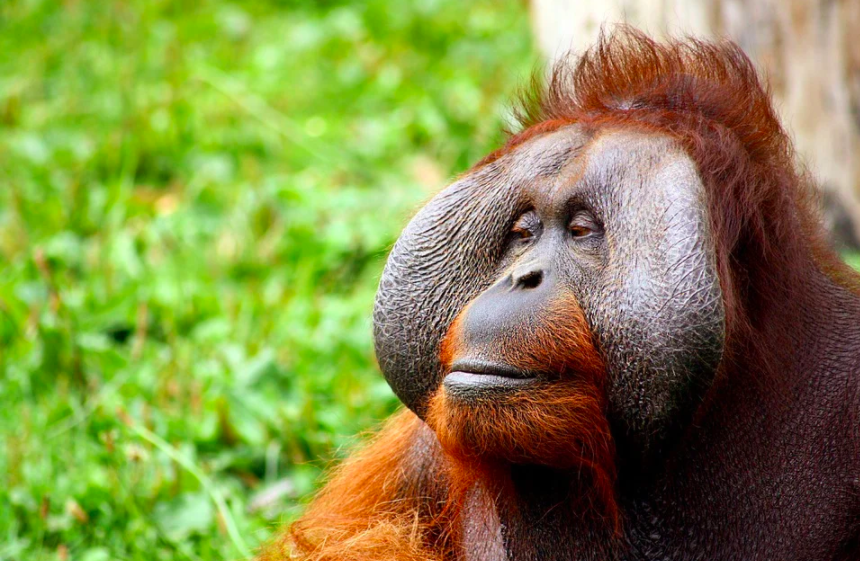Humans, by nature, are a species designed for tropical climates. Our evolutionary journey has shaped our bodies to thrive in warm and humid environments. Considering the span of our species’ evolution, we are relatively new to adapting to cold climates, and from a physiological standpoint, our bodies aren’t inherently equipped to endure such conditions.
Woodpeckers’ Ingenious Brain Protection
As a woodpecker relentlessly pecks at tree trunks, its tongue retracts into its skull and encircles the brain, providing essential protection from the intense vibrations. This remarkable adaptation is just one of the many unique traits of woodpeckers, who also possess specialized beaks and robust neck muscles, enabling them to efficiently drill into trees in search of insects, create nesting cavities, and communicate through drumming patterns. These fascinating birds truly exemplify the wonders of nature and evolutionary design.
Unlikely Kin: The Surprising Connection Between Cows and Dolphins
Cows share a closer evolutionary relationship with dolphins than with horses. This fascinating connection is due to the fact that both cows and dolphins belong to the infraorder Cetartiodactyla, which encompasses even-toed ungulates and cetaceans. Horses, on the other hand, are part of the Perissodactyla group, which consists of odd-toed ungulates. Despite their differences in […]
Adaptation and Evolution in Movile Cave: A Unique Subterranean Ecosystem
The Movile Cave, a remarkable subterranean ecosystem isolated from the external environment for over 5.5 million years, is home to an array of unique animal species that have evolved within its confines. These creatures thrive in an environment devoid of sunlight, relying on the chemical energy provided by toxic compounds in the air and water […]
Even Before Discovering Fire, Our Ancestors Might Have Had a Way to Cook Food
The awesome thing about science and archaeology is that just when we think we know everything about our human (and human-ish) ancestors, we uncover something new.
Kind of like a never ending Easter egg hunt, and who doesn’t love that?
For a long time, we’ve sort of defined human evolution by our ability to create and use fire to our advantage. It was the evolutionary leap that led us to be able to safely eat protein, which enhanced our brain size and development, and eventually set us apart from other mammals.
Image Credit: iStock
A recent discovery, though, suggest that people may have used hot springs to their advantage long before man lassoed fire.
Archaeologists from MIT and University of Alcalá reported their findings in Proceedings of the National Academy of Sciences, and claim that they’ve found evidence of hot springs near sites where ancient humans settled more than 1.8 million years ago – which was a long time before we learned to control fire.
The site was a rift valley in northern Tanzania, Olduvai Gorge. The area appears to have been rich in hydrothermal vents that were capable of heating the water to over 176 degrees F (80 degrees C), which would have been warm enough to cook meat.
The vents were very close to sites where archaeologists have found stone tools and animal bones, which lends credence to the idea that the early human ancestors settled there on purpose.
Image Credit: iStock
Lead author Ainara Sistiaga, said in a statement that “if there was a wildebeest that fell into the water and was cooked, why wouldn’t you eat it?”
Around the same time, a big environmental change occurred in East Africa, one that say the lane shift from wet and lush to a dryer, grassier terrain.
In addition, lipids produced by a specific group of bacteria – typically seen living in the hot springs of Yellowstone – showed up in the soil, hinting again that hot springs were in the area, says MIT professor Roger Summons.
“They won’t even grow unless the temperature is above 176 degrees F (80 degrees C).
Some of the samples Ainara brought back from this sandy layer in Olduvai Gorge had these same assemblages of bacterial lipids that we are unambiguously indicative of high-temperature water.”
Image Credit: iStock
Of course, they don’t know for sure how these extinct people might have interacted with these hot springs, but since we know they lived nearby, we can imagine that they knew the springs were useful in one way or another. They could have used the water to stew or boil protein, fruits, and vegetables.
Imagine something is possible and it just might be, and these discoveries seem to point to the idea that human beings have always been looking for ways to push the evolutionary envelope.
The post Even Before Discovering Fire, Our Ancestors Might Have Had a Way to Cook Food appeared first on UberFacts.
Three Theories on Why Humans Have Chins
There’s a good chance that you’ve never spent any time considering the bony protrusion at the bottom of your face. I mean, it’s there, you don’t really have to take care of it, if you’re between the pimples and chin hairs seasons of your life, so what’s to consider?
Now that you are thinking about it, though, let me tell you this – we are the only animal, including our closest relatives, like chimps, and our ancestors, like Neanderthals, to have an outward sloping “chin.”
Image Credit: Pixabay
It’s weird, right?
What’s even weirder is that, though theories abound, no one really knows why.
There are more than a few scientists who find this question fascinating, and each is out to untangle the mystery – like Zaneta Thayer, at the University of Colorado.
“That is what makes the appearance of chins in anatomically modern humans so interesting.
It implies there was some sort of behavioral or dietary shift between Neanderthals and anatomically modern humans that caused the chin to form.”
There are actually three main theories as to why we might have developed chins.
The first theory is that it may have developed to make chewing our food easier.
Image Credit: Pixabay
Most people dismiss this theory, because as we’ve evolved, our food has grown softer, not harder to manage, overall. Also, if we did need more bone in order to chew our food, it would make more sense to put it on the inner wall of the jaw, near the tongue, like chimps.
The second theory scientists argue is that our chin must have evolved to assist us with language, because we do have, by quite a stretch, the most extensive speech ability of any of the primates.
But again, the theory is largely dismissed for a simple reason – we don’t require much force to speak, so there’s really no reason a chin would have developed for that reason. Also, if we did, it would be most helpful inside and closer to our tongue, same as chewing support.
So, onto theory number three – it has something to do with sexual selection.
Like, our chins are akin to big orangutan faces or immense antlers or some other feature that primates find titillating. It’s been proven that those animals with the bigger and better whatever are considered more desirable when mates are being selected, and their superior genes are passed on.
Image Credit: Pixabay
Duke University professor James Pampush argues against this one, too, because both sexes, of course, have chins.
“If it’s an adaptation for sexual selection then we are the only mammal that has the same in both sexes.”
Pampush, and most others, have admitted that we simply don’t know why we have chins, and he says that “anyone who tells you they do know is lying.”
Most believe that it could have something to do with our faces getting smaller over time, meaning a chin would be what’s called a “non-adaptive trait,” explained biologists Stephen J Gould and Richard Lewotin back in 1979.
Non-adaptive traits are traits that are a by-product of a change happening elsewhere – that our chins could exist only as a result of another evolutionary change that has a function and purpose.
Who would have thought chins were so controversial and strange?
Something to think about the next time you’re checking out your pretty anatomically modern human face in the mirror.
The post Three Theories on Why Humans Have Chins appeared first on UberFacts.
Scientists believe that the egg…
Scientists believe that the egg came first.The first chicken egg was laid by a bird who wasn’t a chicken.
The post Scientists believe that the egg… appeared first on Crazy Facts.
The Man of the Future
Back in the early 1980s, orthodontist David Marshall, from Syracuse, NY, liked to speculate about what humans would look like 2 million years in the future. Or what “Future Man” would look like, as he referred to our descendants. Based on previous trends in our evolution, he concluded that Future Man will be hairless, big-skulled, […]
The last person to be convicted…
The last person to be convicted of blasphemy in the United States was an Arkansas man who in 1928 put a sign in his storefront reading, “Evolution Is True. The Bible’s a Lie. God’s a Ghost.” He spent 3 months in jail.
The drunken monkey hypothesis…
The drunken monkey hypothesis argues that humans were able to succeed evolutionarily because they could consume alcohol – allowing them to consume calories more quickly and more efficiently than other species.





